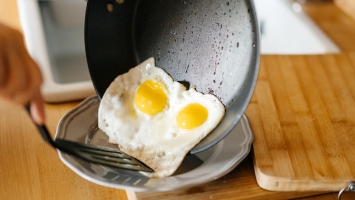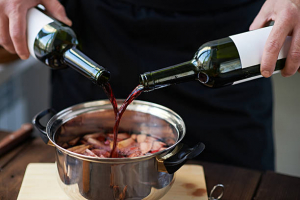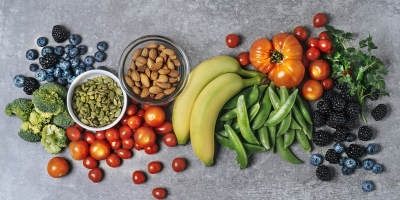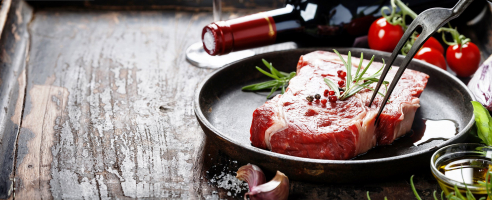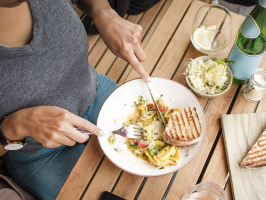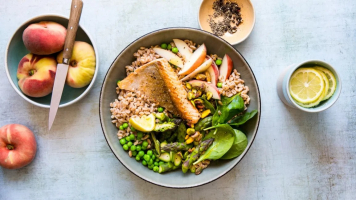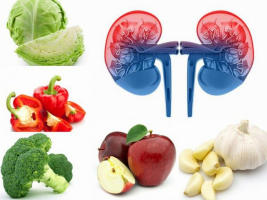Top 10 Best Tips for Cooking with Ginger
Ginger, the spice of life, adds a kick to your favorite soups, curries, and stir-fries. The pseudo-root is widely used in culinary traditions. Even in current ... read more...times, the health advantages of ginger are generally acknowledged. Ginger can be purchased in a variety of forms, including whole root, powdered, and crystalized, depending on the recipe. Here are some of the most important tips you need to know when using ginger in cooking.
-
Heat alters the tastes and structure of numerous foods, according to a study published in the National Library of Medicine. It also has an effect on ginger. When cooking with ginger, one common error is applying the spice too early. While tossing the grated ginger in with the onions, garlic, and other spices may be more convenient, it will merge the taste of the ginger. Fresh ginger includes gingerol, a chemical compound that acts similarly to capsaicin in the pepper.
Gingerol degrades into zingerone, a more fragrant, sweet-tasting molecule when it cooks. If you want a really gingery taste in a dish, add it at the end of cooking. This will take advantage of the gingerol before it is converted into zingerone. For example, if you're creating a hot curry, add ginger along with coconut milk.
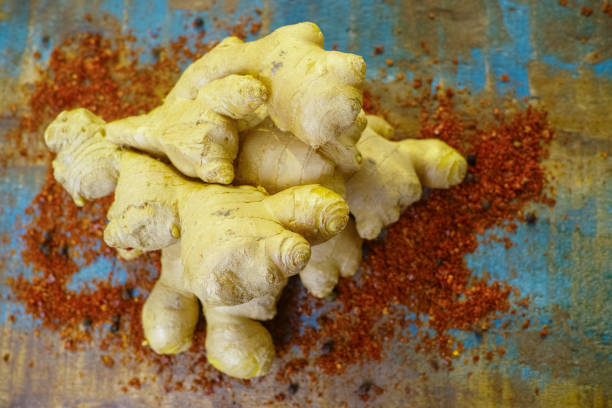
Add your ginger at the end 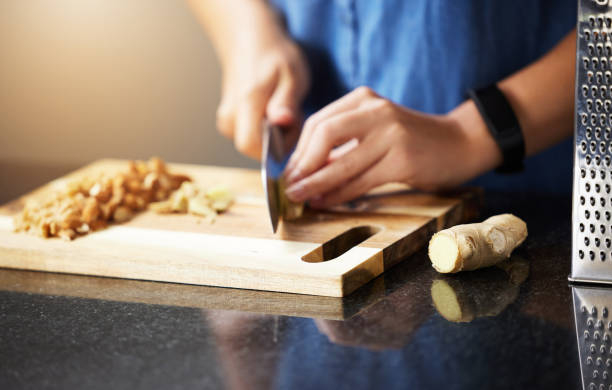
Add your ginger at the end -
If you're new to ginger, you might pick up a piece at the shop and think, "How the heck do I peel this?" Your first instinct may be to grab for a vegetable peeler, but ginger is knobbier than a potato or carrot, so you'll wind up chopping away at much of the meat to get the peel off. For the same reason, a paring knife would not work — besides, you definitely don't want to chop off your skin in the process. Instead, nothing fancier than a metal spoon is required to peel ginger.
You'll need to scrape the skin off the root with the edge of the spoon. Because the root is thick, you don't have to worry about breaking it, so peel as hard as you can with your trusted instrument. Once the skin has been removed, your possibilities are limitless, and you have the maximum quantity of ginger root remaining.
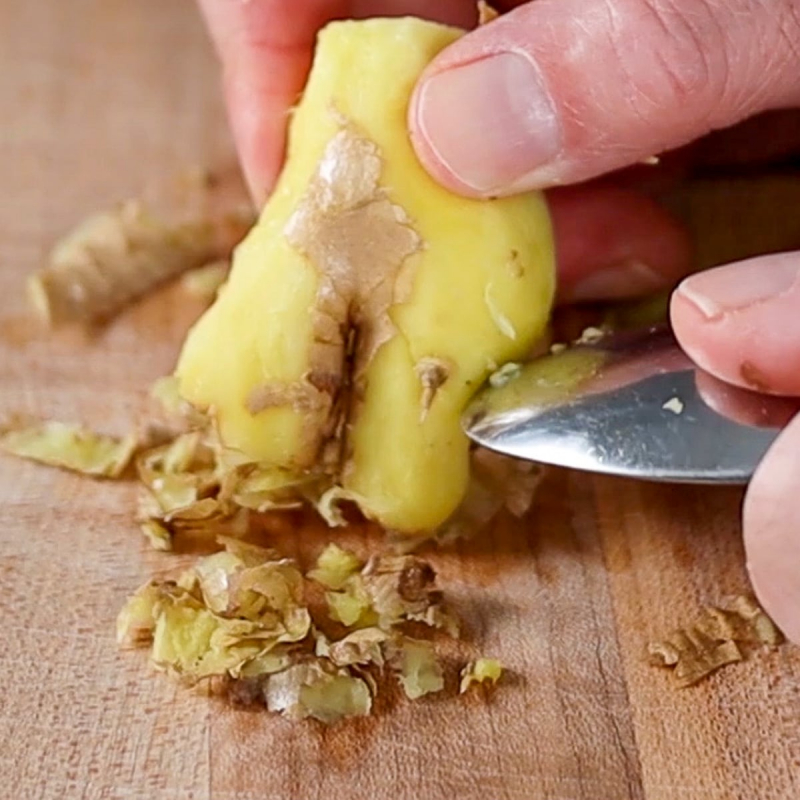
Peel ginger by scraping it 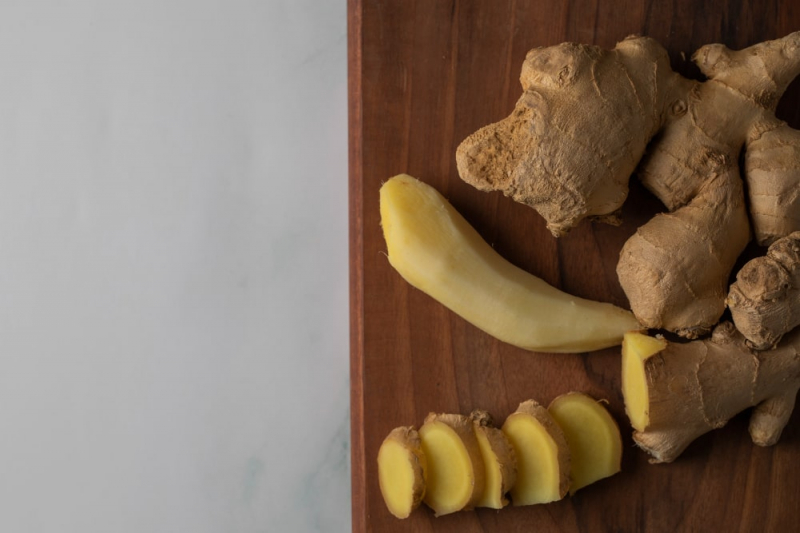
Peel ginger by scraping it -
Isn't it true that produce is stored in the refrigerator? It's not ginger. Keep the root of ginger on your countertop to keep it fresh, especially if you plan to use it regularly or all at once. You don't need to wrap the root or take any other additional steps to keep it fresh in your kitchen. Ginger, like other varieties of fruit, demands dark and cold storage.
Fear not if the ends of the ginger begin to harden where you made your initial incision. Over its exposed areas, the ginger root produces a protective, hard seal. When you're ready to use the ginger, just cut off the tough section of the root with a sharp knife before cooking it. Although this way of storing ginger may offer you a few additional days of usage, try freezing your ginger pieces for longer use — or coming up with new recipes to use the remainder of the root in.
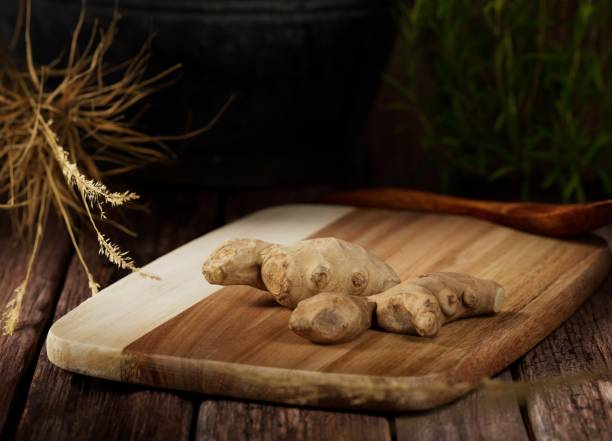
You don't have to store ginger in the ice box 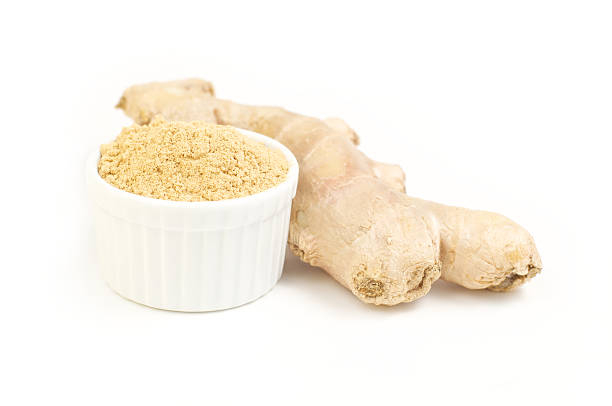
You don't have to store ginger in the ice box -
If you can't tolerate the sight of a single piece of ginger on your counter, go for the freezer. This is the greatest option for those who wish to use ginger sparingly in recipes yet always have a bit on hand. One of the main reasons to start freezing ginger is that it can be stored in the freezer indefinitely. However, after six months, you may notice a loss of taste. When you're ready to grate, you'll find that the frozen root is fresher and simpler to peel.
You may also store the full, unpeeled root in the fridge for up to a month. If the root has been sliced, it should keep in the fridge for two to three weeks. Place the ginger in an airtight freezer bag to preserve it in the freezer. When ready to use, grate the frozen ginger like fresh ginger. If you wish to chop the ginger into dime-sized pieces, thaw it for around 10 minutes for simpler and less random cutting.
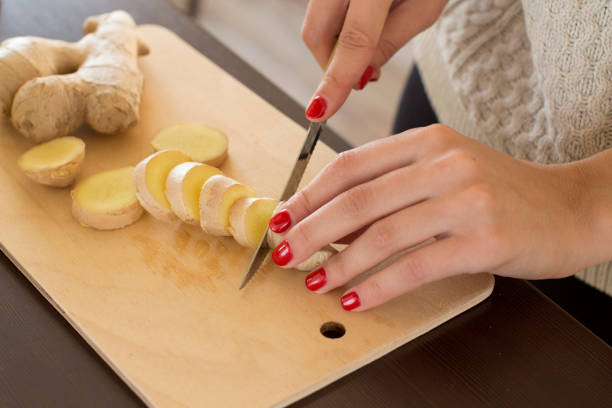
If you can't use a whole ginger root, freeze the rest 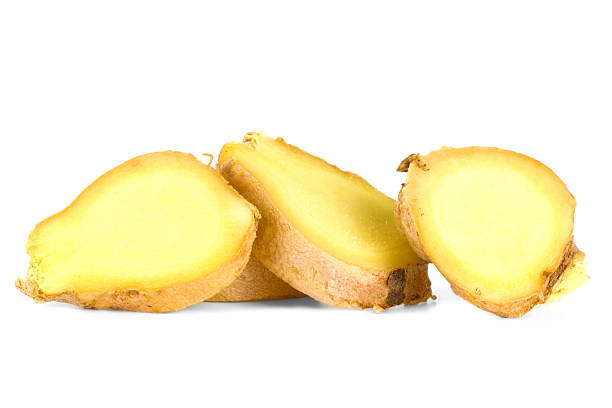
If you can't use a whole ginger root, freeze the rest -
When ginger has gone bad, the root will give off a few telltale indicators that it's time to throw it out. If it's been more than a few weeks on the counter or a few months in the fridge or freezer, you should perform a visual and olfactory assessment before using it in your recipe. The ginger's exterior layer should be papery, while the core should be firm and yellow. Ginger that is soft, wrinkled, or has visible mold growth has gone rotten.
If your ginger passes the visual examination, you should also take notice of its fragrance and flavor when using it. According to Fresh From the Gardens, low-quality or rotten ginger will not have the same strong flavor or scent. It is okay to consume ginger that is bland but not moldy (though it might not be as fun). Expect no vivid pops of flavor in your stir-fry or drink.
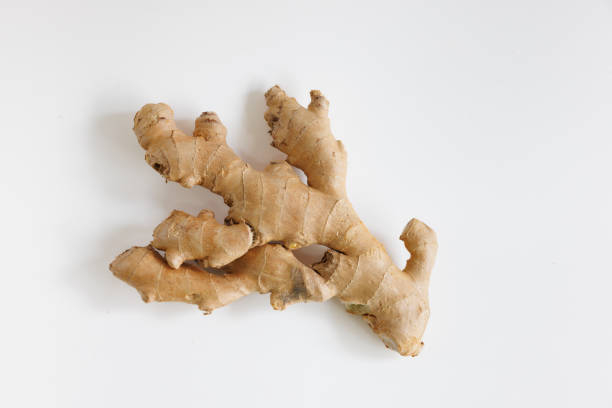
A mild smell may mean your ginger has spoiled 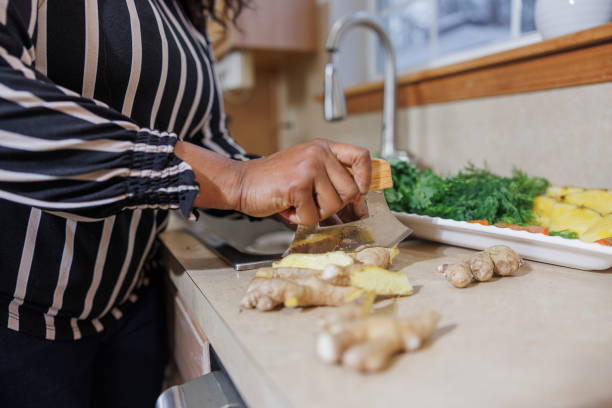
A mild smell may mean your ginger has spoiled -
The microplane grater is your greatest buddy when cooking with ginger, and it's one of Ina Garten's favorite kitchen equipment. Ginger, citrus fruits, and garlic are all easily shredded with the microplane grater. According to Bake Starters, a microplane is easier to use in the kitchen for fine grating since the size of the blades results in a smoother grate than a box grater or a knife.
You'll also note that a microplane grater produces more consistent results and is much simpler to clean than a box grater. Furthermore, unlike a box grater, a microplane grater allows you to grate in both directions. When shredding ginger, utilize just the firmest sections of the root. If it's a little soft, place it in the freezer for a few minutes before grating.
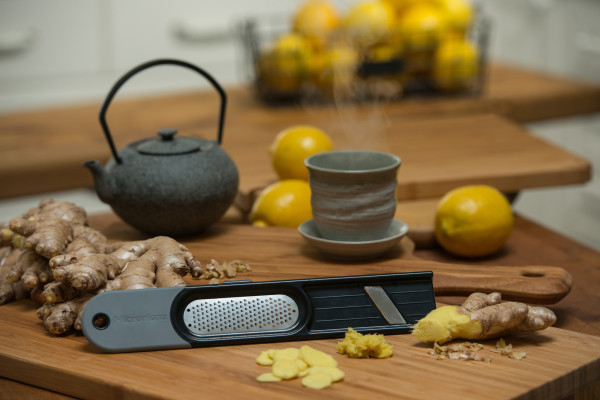
Use a microplane grater for shaving ginger 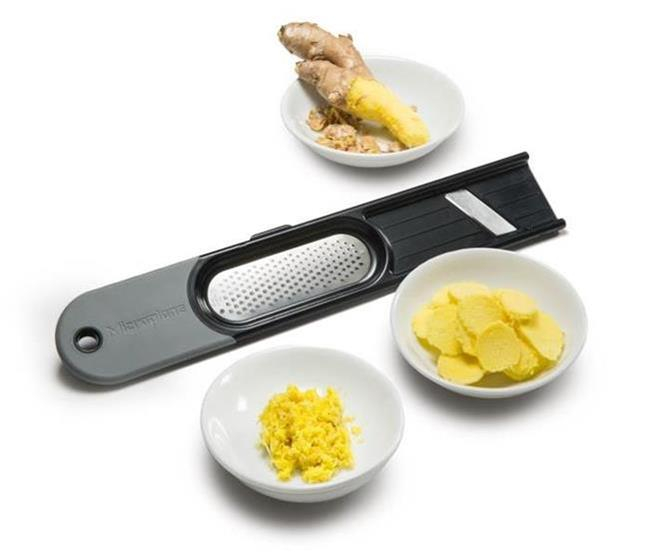
Use a microplane grater for shaving ginger -
Blue is typically not a suitable hue in the kitchen for recognizing damaged food. However, you may discover that your ginger has a blue color intermingled with the yellowy flesh. According to Cooks Illustrated, keeping ginger in frigid temperatures for lengthy periods of time can cause the anthocyanin pigments in the ginger to become blue-gray. This does not necessarily imply that the ginger has gone bad, but it does suggest that it will be less effective than brilliant yellow ginger.
According to the Cooks Illustrated study, when the juice was mixed with water, the blue-colored ginger was marginally less hot than the control (yellow) ginger. The viewers did not perceive a difference in flavor or strength between the two after adding blue ginger to a dish. However, if you've stored the ginger on the counter and blue has started to show, you'll want to pay particular attention to any other potential spoiling conditions to ensure it's not mold.
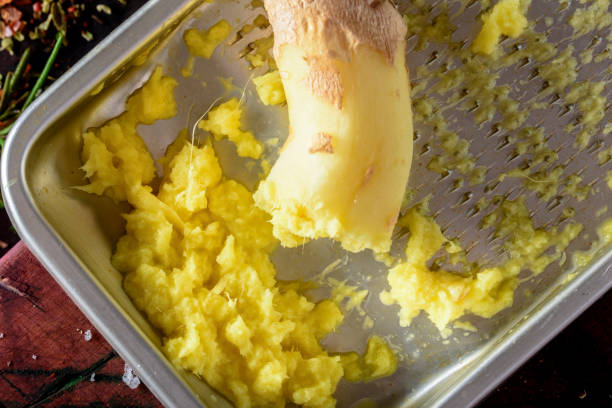
Be aware that color doesn't mean mold 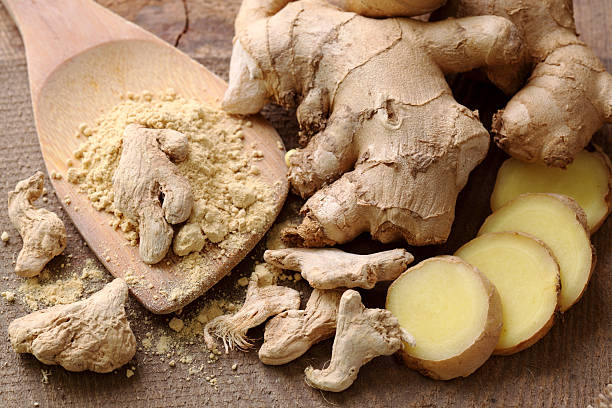
Be aware that color doesn't mean mold -
Ginger is also an excellent addition to drinks. Keep a ginger simple syrup on hand to improve your favorite hot toddy recipe — or stick to non-alcoholic iced tea or lemonade. As the name suggests, simple syrup is manufactured from two basic ingredients: sugar and water. Over low heat, combine the sugar and water in a one-to-one ratio until the sugar dissolves. When the combination has cooled, it becomes thick and is ready to be used in your favorite beverage.
To infuse ginger into the syrup, chop peeled ginger into discs and put them into the heating water. Then, drain the mixture to remove the ginger pieces and place them in the refrigerator. A batch of simple syrup may be stored in the refrigerator for approximately a month in a tightly sealed container. For extended storage, add a tablespoon of vodka or grain alcohol to each cup of simple syrup.
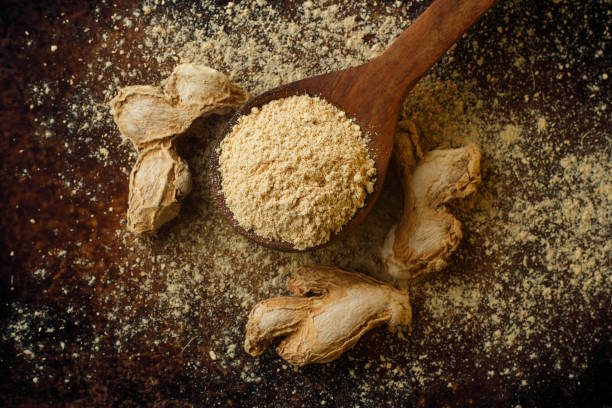
Infuse a ginger simple syrup for cocktails 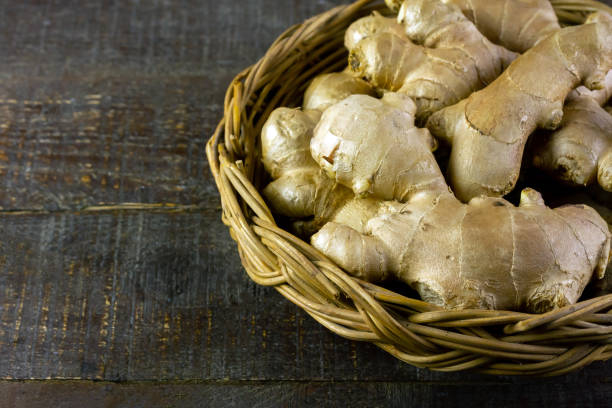
Infuse a ginger simple syrup for cocktails -
Powdered ginger is an essential addition to every spice collection. According to Martha Stewart, powdered or ground ginger is a light brown hue and should smell warm and spicy when opened. The first crucial thing to know about powdered ginger is that it is far less strong than fresh ginger — by some accounts, up to four times less effective. If you need to replace fresh ginger with ground ginger in a recipe, use four parts powdered ginger for everyone part fresh ginger.
Ground and fresh ginger cannot be used interchangeably in every recipe. Fresh ginger adds a tactile aspect to the dish that powdered powder cannot. If you wish to bake using ginger, use powdered ginger rather than fresh ginger. We adore adding powdered ginger in seasonal holiday gingerbread man recipes because the tastes complement cloves and cinnamon. Powdered ginger can also be used in autumnal pumpkin bread. Meanwhile, for evening meals, fresh ginger still reigns supreme.
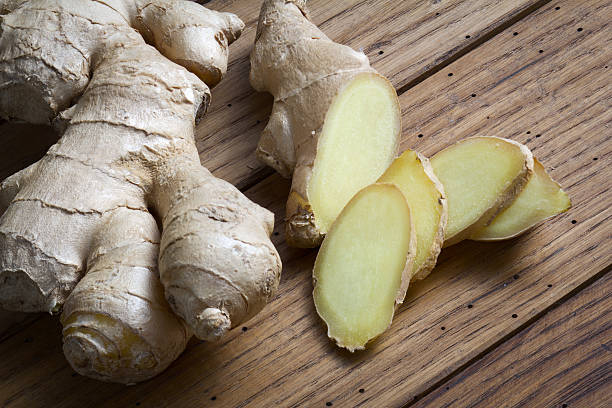
Powdered ginger is less potent than fresh 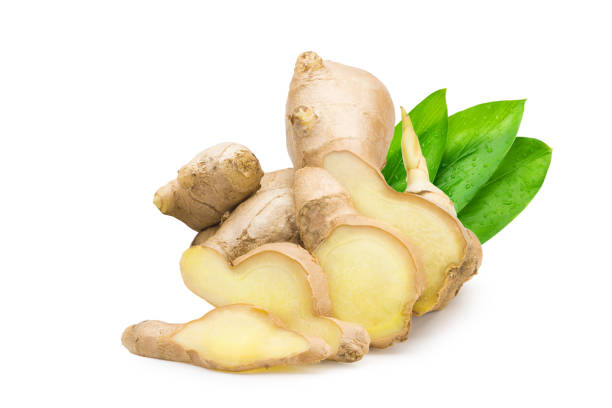
Powdered ginger is less potent than fresh -
Crystallized ginger is usually available in the grocery store's baking or confectionery area. Although they have the look of a gumdrop, these ginger bits deliver a considerably stronger delicious punch than you'd anticipate. Ginger crystallized (also known as candied) is made out of three ingredients: ginger, granulated sugar, and water. The ginger is peeled first, then cut into rounds and cooked for roughly an hour. The ginger is then reboiled in a mixture of equal parts water and sugar.
When the skin of the ginger has developed a darker syrup texture, it is taken from the fire and placed in yet another layer of granulated sugar. The result is a chewy, sugary surface that may be eaten on its own. Candied ginger may also be used to offer a bouncy, soft tactile contrast to sweet baked products like biscuits and pies, or even a gingersnap cookie. The advantage of this ginger recipe is simple: less heat and more sweetness.
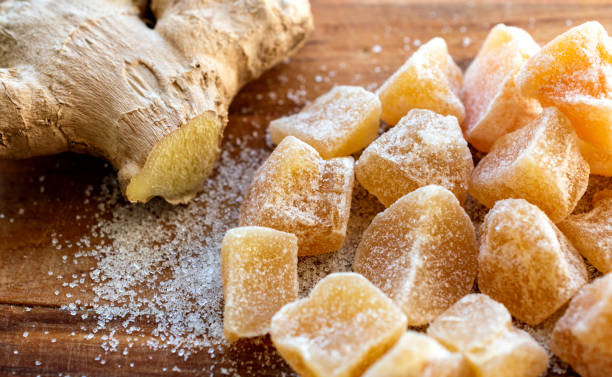
Consider candied or crystallized ginger for sweet applications 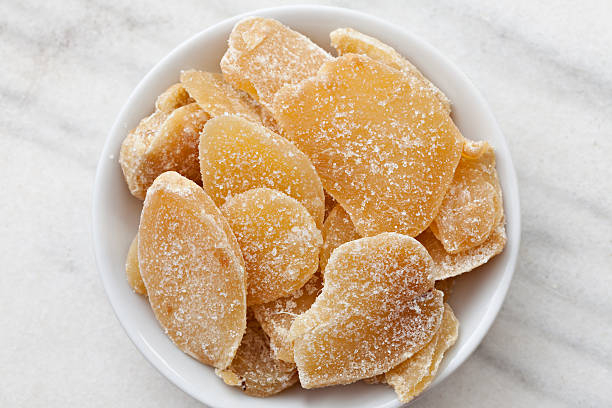
Consider candied or crystallized ginger for sweet applications












